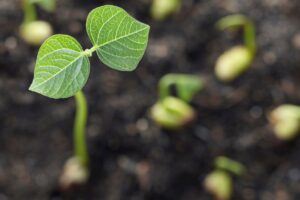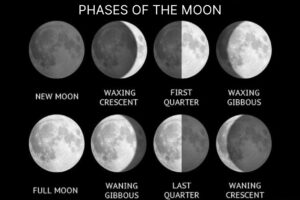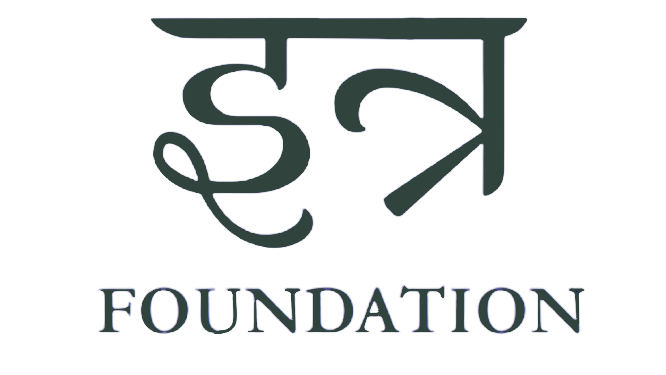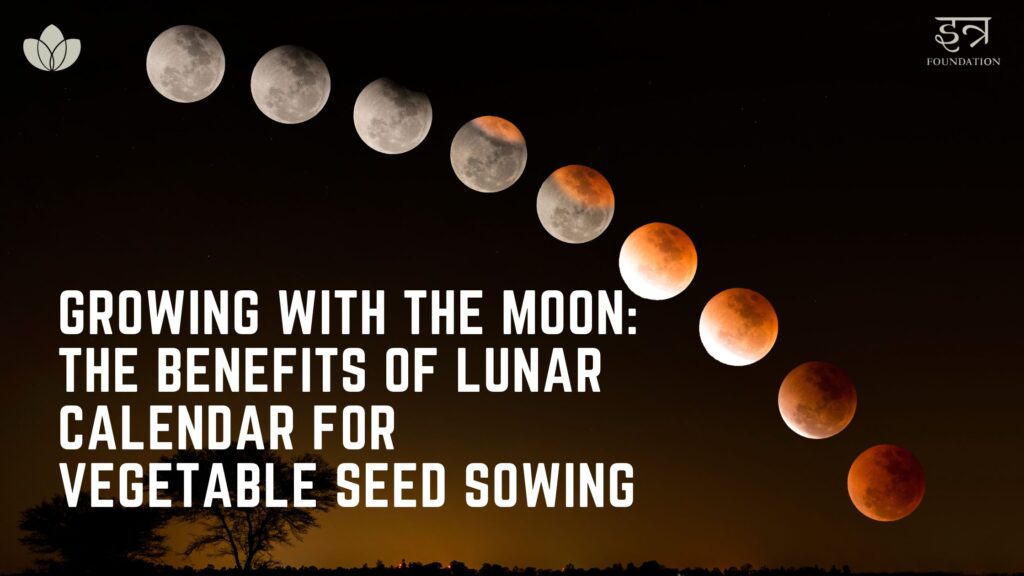The lunar calendar has been used for centuries to determine the best times for planting and harvesting crops. Unlike the traditional Gregorian calendar, which is based on the solar cycle, the lunar calendar follows the cycles of the moon. This method takes into account the gravitational pull of the moon on the Earth, which is believed to have an impact on plant growth. By following the lunar calendar for vegetable seed sowing, gardeners can reap a host of benefits. This includes improved soil health, better seed germination rates, stronger plant growth and healthier and more productive gardens overall. In this article, we will explore the benefits of following the lunar calendar for vegetable seed sowing and how it can lead to a more successful and sustainable garden.

Improved Seed Germination
Explanation of how the moon’s gravitational pull affects water levels in the soil
The moon’s gravitational pull affects the ocean tides, but it also has an impact on the water levels in the soil. The moon’s gravity pulls the water upward, which can help to improve soil moisture and nutrient content. This is because the gravitational pull is strongest during a full moon and this helps to draw water up from the soil and towards the surface.
Description of how this affects seed germination rates
Seed germination is highly dependent on soil moisture levels. When seeds are planted in soil with low moisture content, they can have a hard time germinating. The increased soil moisture caused by the moon’s gravitational pull can help to improve seed germination rates. Additionally, the increased nutrient content in the soil can provide a better environment for seeds to grow and develop.
Evidence from research studies supporting the correlation between lunar cycles and seed germination
Several research studies have investigated the correlation between lunar cycles and seed germination. For example, a study conducted in India showed that the germination rates of mung beans and lentils were significantly higher when they were sown during the waxing phase of the moon. Another study conducted in France found that tomato plants grown from seeds sown during the full moon grew taller and had a higher yield than those grown from seeds sown during other lunar phases. These studies suggest that there may be a correlation between lunar cycles and seed germination, although more research is needed to fully understand this relationship.
Stronger Seedlings and Faster Growth

A. Explanation of how lunar cycles can affect plant growth hormone levels
- The moon’s gravitational pull can also affect the movement of fluids within plants.
- During the waxing moon, there is an increase in the movement of fluids from the roots to the shoots of plants.
- This movement is due to an increase in the level of plant growth hormones, such as auxin, cytokinin and gibberellin.
B. Description of how this affects seedling growth and overall plant growth
- When seedlings receive a healthy supply of growth hormones, they tend to grow stronger and faster.
- This can result in more robust and productive plants, with better yields and resistance to pests and diseases.
- The improved growth also helps seedlings compete with nearby weeds for nutrients and sunlight, leading to less weed pressure.
C. Evidence from research studies supporting the correlation between lunar cycles and plant growth
- Research has shown that plant growth hormones, such as auxin and cytokinin, are affected by the lunar cycles.
- One study found that lettuce seedlings grew taller and had larger leaves when sown during the waxing moon phase compared to the waning moon phase.
- Another study on corn found that plants sown during the waxing moon phase had taller stalks, larger leaves, and bigger ears of corn than plants sown during the waning moon phase.
- These and other studies suggest that the lunar calendar can be a useful tool for gardeners to improve plant growth and yields.
Higher Crop Yields
A. Explanation of how lunar cycles can affect nutrient uptake in plants
- The moon’s gravitational pull affects not only water levels in the soil, but also the movement of other nutrients, such as nitrogen, phosphorus and potassium.
- During the waxing moon phase, the gravitational pull increases, which draws water and nutrients upward, making them more available to plants.
- During the waning moon phase, the gravitational pull decreases, which allows for better nutrient absorption and root growth.
B. Description of how this affects overall crop yields
- When plants have access to a consistent supply of nutrients, they are able to grow more vigorously and produce higher yields.
- Proper nutrient uptake can also help plants resist diseases and pests, leading to healthier plants overall.
- By following the lunar calendar for vegetable seed sowing, gardeners can ensure that their plants have access to the right nutrients at the right time, resulting in higher crop yields.
C. Evidence from research studies supporting the correlation between lunar cycles and crop yields
- A study conducted by the National University of La Plata in Argentina found that crop yields for wheat, corn and soybeans were significantly higher when sowed during the waxing moon phase compared to the waning moon phase.
- Another study conducted in India found that crop yields for okra, onion and wheat were higher when sowed during the waxing moon phase compared to the full moon phase.
- While more research is needed to fully understand the correlation between lunar cycles and crop yields, these studies suggest that following the lunar calendar for vegetable seed sowing can lead to higher yields.
Natural Pest and Disease Control
A. Explanation of how lunar cycles can affect the behavior of pests and beneficial insects
- Lunar cycles can affect the activity levels of pests and beneficial insects in gardens.
- During certain phases of the moon, such as the full moon, pests like cutworms and slugs are more active and can cause more damage to plants.
- On the other hand, during other phases of the moon, beneficial insects like ladybugs and lacewings are more active and can help control pest populations.
B. Description of how this affects pest and disease control in gardens
- By following the lunar calendar and timing gardening activities like planting and pest control according to the moon’s phases, gardeners can take advantage of the natural behavior patterns of pests and beneficial insects.
- This can lead to more effective and natural pest and disease control in gardens, without the need for harmful chemical pesticides.
- For example, planting certain crops during specific lunar phases can attract beneficial insects to the garden, which can help control pest populations naturally.
C. Evidence from research studies supporting the correlation between lunar cycles and natural pest and disease control
- While there is limited scientific research on the topic, some studies have shown that lunar cycles can affect insect behavior and activity levels.
- For example, a study published in the Journal of Economic Entomology found that the lunar cycle had a significant effect on the activity levels of a pest insect called the green stink bug.
- Other studies have found that lunar cycles can also affect the behavior of beneficial insects like bees and butterflies, which can help with pollination and pest control in gardens.
Reduced Need for Chemical Fertilizers and Pesticides
By following the lunar calendar for vegetable seed sowing, gardeners can also experience a reduced need for chemical fertilizers and pesticides. Lunar cycles can affect soil health and fertility by influencing microbial activity and nutrient availability. When soil health is improved, plants are better able to resist pests and diseases on their own, reducing the need for chemical inputs. Research studies have shown that plants grown according to the lunar calendar tend to have higher levels of essential oils and other secondary plant compounds that act as natural insecticides and fungicides. Additionally, by practicing organic gardening methods in accordance with lunar cycles, gardeners can reduce their reliance on synthetic chemicals and promote a healthier, more sustainable garden ecosystem.
How to Use the Lunar Calendar for Vegetable Seed Sowing
An overview of how to read the lunar calendar is based on the cycles of the moon, which lasts for around 29.5 days.

There are typically four lunar phases
- The New Moon
- Waxing Moon
- Full Moon
- Waning Moon
To use the lunar calendar for vegetable seed sowing, you’ll want to pay attention to the waxing and waning phases, as these are associated with increasing and decreasing gravitational pull respectively. When the moon is waxing, its gravitational pull is stronger, which can lead to better seed germination and stronger seedlings. When the moon is waning, its gravitational pull is weaker, which is a good time to focus on activities that don’t require as much energy from the plant, such as root development.
Tips for planning seed sowing activities according to lunar cycles
One way to plan your seed-sowing activities according to lunar cycles is to use a lunar calendar to determine the best time to plant different types of seeds. For example, root vegetables like carrots and beets should be planted during the waning moon, while leafy greens like lettuce and spinach should be planted during the waxing moon. Another approach is to focus on the zodiac signs that correspond with different plant types. For example, signs like Taurus and Capricorn are associated with root vegetables, while signs like Cancer and Pisces are associated with leafy greens.
Suggestions for additional resources on using the lunar calendar in gardening
There are many resources available for those interested in using the lunar calendar for gardening. Books like “Gardening by the Moon” by the Old Farmer’s Almanac and “Lunar and Biodynamic Gardening” by Matt Jackson provide comprehensive guides on using lunar cycles for planting, as well as other biodynamic gardening techniques. Additionally, there are several online resources and apps available that can help you track lunar cycles and plan your seed-sowing activities accordingly.
In conclusion, following the lunar calendar for vegetable seed sowing can provide numerous benefits for gardeners, including improved seed germination, stronger seedlings and faster growth, higher crop yields, natural pest and disease control, and reduced need for chemical fertilizers and pesticides. By understanding the lunar cycles and planning seed-sowing activities accordingly, gardeners can reap these benefits and achieve healthier and more productive gardens. Therefore, it is recommended that gardeners give the lunar calendar method a try in their own gardens. It is also important to remember the importance of sustainable and natural gardening practices, which not only benefit the garden but also the environment as a whole. Let’s work towards a greener future by adopting such practices.



